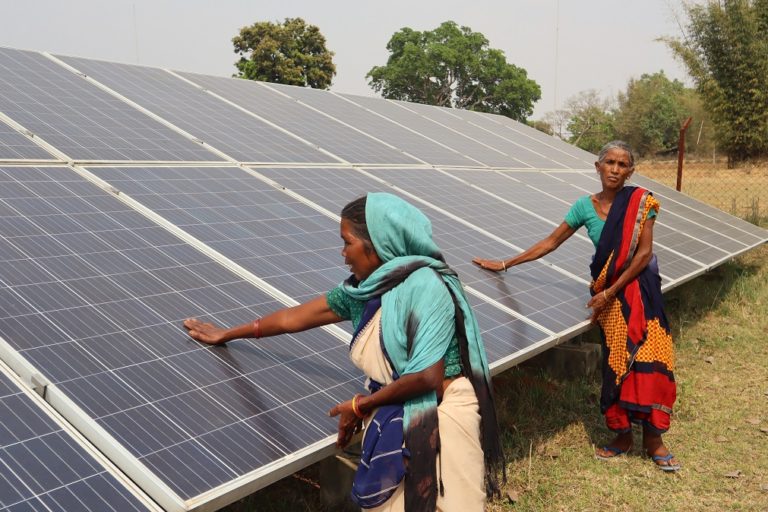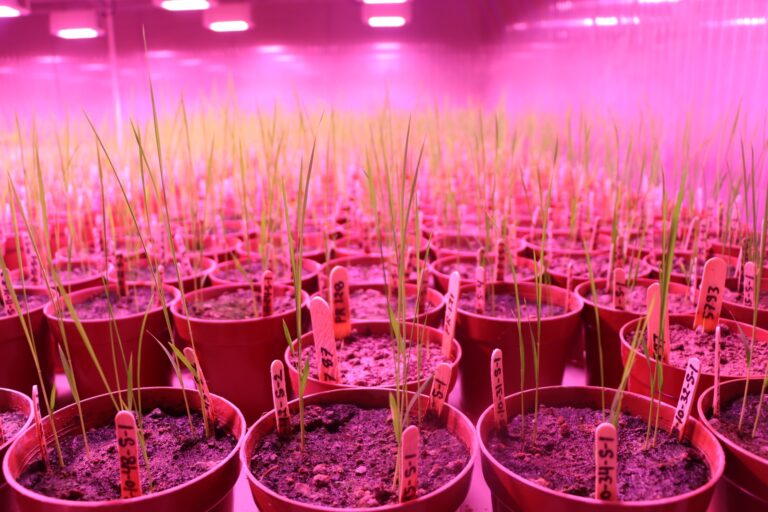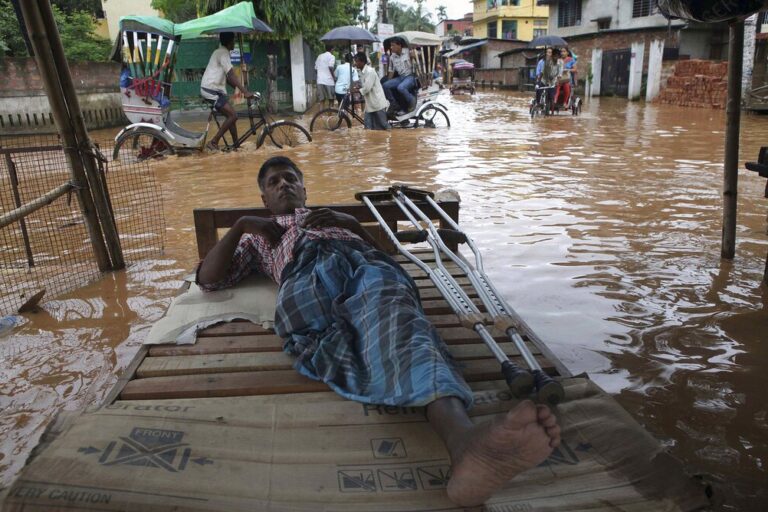- Coal-rich Jharkhand had set targets to achieve renewable energy capacity. Despite this, the state is lagging behind in clean energy investment. In fact, new coal-fired power plants are being set up.
- According to the target, by 2022, Jharkhand should have had an installed capacity of 2000 MW of renewable energy, but it’s only around 100 MW now.
- Three big coal-based power plants in the state will become operational in the near future, which will increase the coal power generation by 7,580 MW.
- Due to the growing gap between fossil fuel-based energy and clean energy, the transition is expected to be more challenging in Jharkhand. In the era of coal phase-out, less investment in clean energy can reduce the possibilities of employment and employment
With the aim to meet half of its electricity needs from renewable energy by 2030, India is giving a push to solar and wind energy. While many of the southern and western states are headed in this direction, in Jharkhand, in the recent years, there has been an increase in thermal power plants and not much progress is seen on renewable energy.
India currently has 28.2 GW (28,200 MW) of coal-based power plants under construction that are in various stages of completion. Of this, 7.58 GW (7,580 MW) is in Jharkhand. This means that Jharkhand will have more than a quarter of the capacity of newly-built coal power plants in India.
Presently, three big coal-based power plants are being constructed in different parts of Jharkhand. According to the Central Electricity Authority (CEA), Jharkhand’s current installed capacity of coal-based power generation (utilities) is 2,361 MW. Once these three plants are fully commissioned, this capacity will increase by 7,580 MW, which will be three times the current capacity of Jharkhand.

These three new plants include Adani Power (Jharkhand) Limited’s 1,600 MW (two units of 800 MW) plant at Godda and Patratu Vidyut Utpadan Nigam Limited‘s 4,000 MW (five units of 800 MW) plant at Patratu in Ramgarh district. Additionally, National Thermal Power Corporation (NTPC’s) North Karanpura Super Thermal Power Plant of 1,980 MW (three units of 660 MW each) is coming up in Tandwa in Chatra district. The 4,000 MW plant at Patratu will be operated by Patratu Vidyut Utpadan Nigam Limited, a joint venture between NTPC (74%) and Jharkhand Government Undertaking Jharkhand Bijli Vitran Nigam Limited (26%). This plant, once completed, will be one of the largest thermal power plants in the country.
According to the latest report of the CEA, the current cost of Patratu and Tandwa thermal power plants is pegged at Rs 34,057 crore. This is a major investment in fossil energy in a state that is lacking behind in investing in clean energy.
Low installed capacity of clean energy in the state
While there is going to be a qualitative increase in the installed capacity of electricity generated from coal in Jharkhand, the state is lagging behind in increasing its renewable energy capacity. This situation may widen the gap between fossil energy and clean energy, while it should actually reduce.
According to a recent study by energy think-tank Ember, Jharkhand was to achieve 2,005 MW of renewable energy capacity by 2022 but currently has an installed capacity of 103.26 MW, just five per cent of the target.
To meet its targets in the renewable energy sector, Jharkhand announced the second Solar Energy Policy on July 5, 2022. Earlier in 2015, the first Solar Energy Policy was issued, in which a target was set to generate 2,650 MW of solar power by 2020 in the state. In the second Solar Energy Policy, Jharkhand has set a target to produce 4,000 MW of clean energy in five years. In the financial year 2023, Jharkhand has set a target of generating 443 MW of solar power. But, the officials of Jharkhand Renewable Energy Development Agency had no clear answer on the questions related to achieving this target. On the contrary, they listed the many challenges in getting solar energy projects off the ground. One of the reasons include difficulty in changing the mentally of people to adapt to the new technology.

Vijay Kumar Sinha, the project director of Jharkhand Renewable Energy Development Agency (JREDA), told Mongabay India: “The Kusum Scheme and the installation of solar rooftops are some of the steps that have been successful here (in Jharkhand). We are now moving towards making solar parks and are contacting every district for the same. We are also making solar villages in every district. These are especially being constructed in villages where it is difficult to transport electricity. We are installing mini or micro grids of 50 to 60 MW in such villages.”
As per the new policy released in 2022, Jharkhand has set a target of making 1,000 solar villages.
Sinha said, “We are working on a plan to set up a 600 MW floating solar plant at Chandil and an approval for the same has been received from the Centre. If this project is successful, it will be the first major achievement in the renewable energy sector in the state. We will be able to supply electricity to two lakh homes.
Vibhuti Garg, Energy Economist and South Asia Director of the Institute of Energy Economics and Financial Analysis (IEEFA), told Mongabay India: “The country is working on a target of achieving 500 GW of renewable energy capacity by 2030. For this, domestic manufacturing should be encouraged.” She says that generating electricity from coal is expensive. As per reports, it costs Rs 8.34 crore to add one megawatt of power capacity.
To what extent Jharkhand is dependent on coal?
According to the Livelihood Opportunities for Jharkhand report by think tank Climate Trends and Ernst & Young LLP, Jharkhand currently ranks fourth in the country in coal production (after Chhattisgarh, Odisha and Madhya Pradesh), but it has the largest coal-based workforce due to the presence of a significantly large coal mining area and the largest number of mines (113).
Out of the 24 districts, there are coal mines in 12 districts; Dumka will soon be added to this list. Districts like Bokaro, Ramgarh and Dhanbad are not only heavily dependent on coal, but there are many other coal-based industries in these districts. The new power plant will also create new coal-dependent communities in the respective districts.
The Climate Trends and Ernst & Young’s April 2023 report analysed the coal workforce and potential challenges of transition in major coal producing states, including Jharkhand. The study, based on a sample survey of 6,000 people dependent on coal and power plants, says that most of the communities around coal mines and power plants are heavily dependent on coal for their economic activities.
The study says that while out of the total gross revenue, the central government gets three percent from the coal sector, in Jharkhand, it is eight percent. According to this study, which focuses on Ramgarh, Ranchi, Bokaro, Dhanbad and Chatra districts, coal mining and its associated economic activities depend on a complex and delicate balance.
Energy economist Vibhuti Garg says: “Coal fulfills our energy security, and, at the same time, thanks to the funds generated from it, it also helps in improving social, health, education and other parameters.”

Jharkhand is heavily dependent on the District Mineral Foundation (DMF) trust funds for providing basic amenities to people. The contribution of coal mines tops the list. According to a study by think tank iForest, until February 2022, Rs 3,685.6 crore was spent from the DMF fund in Jharkhand to provide various amenities; out of this, Rs 2,875 was spent only on providing drinking water.
Shrestha Banerjee, Just Transition Director, iForest, told Mongabay-India: “Jharkhand has a huge dependence on coal. Apart from the direct dependence, there are a large number of people who are indirectly dependent on the coal-based industry. Dhanbad, Bokaro and Ramgarh are such districts which are completely dependent on coal. Here, 50 to 70- year-old mines are still functioning though their productivity has reduced and they are loss-making entities. These districts are going to transition in the next 10 to 15 years and in such a situation, one has to think about their economic diversification and new investments.”
Talking about the major coal producing districts of Jharkhand, Banerjee says: “These are the districts that are heavily coal dependent. Districts like Chandrapur and Nagpur in Maharashtra also grew out of the coal economy, but they are not coal-dependent.”
In such a situation, Banerjee stresses on the promotion of green investment and green economy for a better transition in Jharkhand.
Challenges and opportunities in adoption of renewable energy
As the country is in the process of energy transition, some states have decided not to set up new coal power plants. Chhattisgarh and Gujarat, the major producers of coal-based power in the country, have taken a policy decision that they will no longer approve new thermal power plants. In such a situation, it is noteworthy that Jharkhand is emerging as a new hub of coal-based electricity.
Swati D’Souza, Lead Country Analyst and Coordinator (India) of the International Energy Agency, told Mongabay-India, “These power plants being built in Jharkhand are under construction for the last five to eight years. If more new power plants are built, it will be a problem. It has to be kept in mind that we have to increase investment in renewable energy and not invest in new coal power plants. There is a lot of potential for renewable energy in Jharkhand, but for this, the installed capacity will also have to be increased.
Jharkhand, with the largest coal labor, is facing many challenges in terms of investment and capacity installation in clean energy, which include land acquisition, non-availability of flat land and people not being mentally prepared for it.
The April report on Jharkhand by Climate Trends has also assessed the possibilities of renewable energy in Jharkhand. According to this, Jharkhand has a potential of 150 GW of renewable energy. However, there are some challenges associated with it in the state. These include land acquisition, lack of manpower and investment.
A government official has been quoted as saying that Jharkhand has no free land to set up large-scale solar projects due to its rugged and forested terrain. There are very few solar energy developers and investors from both the private and public sector. Due to the availability of land, states like Gujarat and Karnataka have invested more in the renewable energy sector.
A JREDA official told this correspondent that it is very difficult to convince people to shift to solar energy. The vendors engaged in this work also have to face problems due to the disinterest of the people.
iForest has suggested in its study that the DMFT funds can be used to encourage the use of solar power on a small scale, by installing solar power plants in Anganwadi centers, health centers, schools, etc. Along with this, they can also be used in schemes related to agriculture-based business and livelihood. This will also bring change in the lives of the people.
This story was first published on Mongabay Hindi.
Banner image: Magadh Coalfields. Photo by Rahul Singh/Mongabay.













